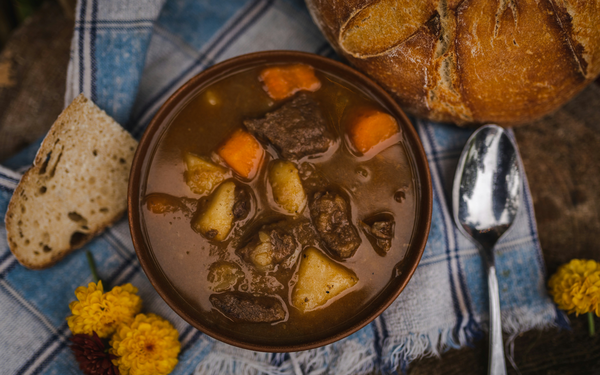
This year’s nostalgic comfort food trend
will continue well into 2026, along with consumers’ increasing need for value when dining out or ordering in, according to a new report from The National Restaurant Association.
The 2026
What's Hot Culinary Forecast is a culmination of culinary professional insights gathered by the organization in October of this year.
The study highlights the top trends “set to shape
America's menus in the coming year,” according to the organization.
“Comfort and value are the twin pillars shaping America's menus right now,” says Dr. Chad Moutray, chief
economist for the National Restaurant Association, in the report. “Consumers are seeking meals that deliver joy and familiarity without breaking the bank, and operators are meeting that ask with
creative takes on comfort classics and sourcing local ingredients that make healthy choices easy.”
advertisement
advertisement
The report listed the top 10 overall trends for 2026, in no particular order.
Comfort foods, such as classic soups, stews and burgers, will be in demand, as consumers seek out feelings of nostalgia and emotional connection through these richer options.
The
comfort food trend extends to global cuisine as well, with consumers seeking out “reinterpreted homestyle dishes from around the world, blending authenticity with local influence.”
Smash burgers -- thin patties smashed into the pan to create crunchy edges, a technique popularized in diners and state fairs -- still rank high with consumers, as their retro diner appeal lines up
with consumers’ continued pursuit of nostalgia and comfort food.
Of course value remains a top priority, as operators continue to balance providing food customers desire with a price
they can afford.
Also important for 2026: Local sourcing of ingredients from nearby farms and producers by restaurants, as consumers place an increasing emphasis on freshness and
sustainability.
Consumers also want menus to be easy to read, with clear labeling, icons and cues, so they can “make quick, informed choices about ingredients, calories and
sustainability.”
Allergen-friendly menus rank highly as well, with options for customers with dietary restrictions, including gluten-free items and nut- and dairy-free dishes.
Consumers will continue to look for what the report calls “cleaner” recipes, those containing fewer additives and dyes, as they “are prioritizing ingredient
transparency.”
The protein push remains in effect in 2026, with consumers desiring more customizability to add additional protein to everything from smoothie bowls to pancakes.
And the use of eco-friendly packaging in restaurants is thankfully not just a trend; consumers want to continue using compostable and reusable packaging when they pick up food to take
home or order out.